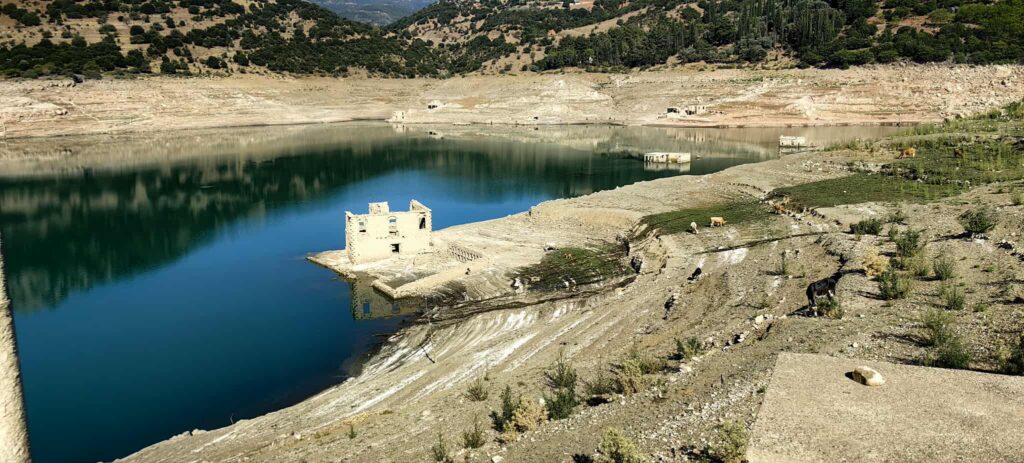
Lake Mornos, Early September 2024
What you see here is not just a photograph. It’s a warning.
Lake Mornos — the primary freshwater reservoir supplying greater Athens — is in dangerous decline. Once spanning around 16.8 km² in 2022, the lake has shrunk dramatically to just 12.0 km² in 2024, according to multiple sources including Reuters and The Guardian. This is not a seasonal fluctuation. It’s a shift that reflects an increasingly volatile climate and a dangerously fragile water infrastructure.
A Village Rises, a Lake Disappears
Nearly 45 years ago, the village of Kallio was submerged to create Lake Mornos. Now, with the water level plunging by tens of meters, Kallio is emerging again — a ghost of the past revealing the scale of the present crisis.
The lake’s shrinkage is not just a geographical change — it’s a signal. A sign of drought, intensifying heatwaves, and insufficient winter rainfall, all converging to make one of Greece’s most vital resources dangerously unreliable.
“If We Don’t Get Rain…”
Experts have sounded the alarm:
“If we do not get rainfall this winter, things will become even more severe.”
This is not hypothetical. This is a direct threat to the water security of nearly 4 million people in the capital region. And yet, as the lake recedes, so does public urgency — buried beneath bureaucracy, politics, and competing crises.
This article isn’t here to offer instant solutions or point fingers. It’s here to face the reality: Athens is losing its most critical water source.
What Can You Do?
📸 Share images from Lake Mornos or your local water source. Let’s make this crisis visible — not just to policymakers, but to our communities.
💧 Talk about it. Spread awareness, especially among those who still believe this is someone else’s problem.
👥 Support organizations fighting for water justice and environmental action. Volunteer, donate, speak up.
Water is Not a Luxury — It’s a Right
Athens, and every city, deserves clean, safe, reliable water. That must be the baseline, not the aspiration.
The resurfacing of Kallio is not a historical curiosity. It’s a warning. And we ignore it at our peril.
